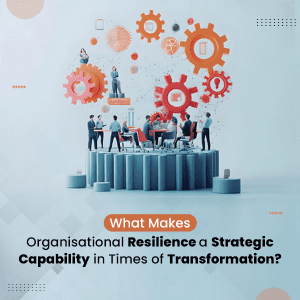
Change is an inevitable aspect of project management, a dynamic process where basic assumptions and stakeholder preferences can evolve over time. Even with meticulous planning, no project unfolds precisely as envisioned during execution. The primary objective of any project is to instigate a transformation, and project managers must not only establish initial parameters like budget, timeline, and goals but ensure the delivery of a product or service that consistently satisfies stakeholders. Despite our best efforts to define satisfaction early in a project, the meaning of “satisfactory” can shift along the way. This is why organizational change management stands as a critical skill for project managers and a pivotal expertise area for project-handling organizations.
Understanding ADKAR Model for Change Management
ADKAR Change Management is a methodical approach to navigating organizational transitions. It encompasses strategies, processes, and techniques geared towards facilitating seamless changes. In the realm of project management, ADKAR change management specifically addresses the impact of project-related changes on individuals, teams, and the organization. Activities include identifying stakeholders, analyzing the change impact, formulating a communication plan, and executing change initiatives.
Key Questions in Understanding ADKAR Change Management
- Project Objectives Achievement: To what extent did the project realize its objectives?
- Adherence to Schedule: Did the project adhere to the planned schedule?
- Budget Adherence: Did the project stay within the allocated budget?
- Effectiveness of ADKAR Change Management: How effective was the ADKAR change management program?
Decoding the Contrast: Enterprise Change Management vs. Project Management
While often used interchangeably, Enterprise Change Management and project management have distinctive differences.

The Crucial Role of ADKAR Change Management in Project Success
ADKAR Change Management and project success share an intrinsic connection, impacting each other in crucial ways:
- Enhanced Impact Visibility
ADKAR Change Management facilitates a comprehensive assessment of how changes influence project outcomes. Proactive questioning about change necessity, schedule alterations, additional costs, resource needs, and training requirements helps identify and address potential issues early. - Augmented Accountability
A well-defined ADKAR change management plan establishes clear roles, responsibilities, and decision-making authority, reducing internal conflicts and legal disputes. - Resistance Mitigation
Transparent communication during ADKAR change management overcomes resistance by ensuring understanding and alignment among team members, partners, clients, and stakeholders. - Time and Cost Efficiency
Effective ADKAR change management enhances project efficiency, saving time and money. Modern solutions enable stakeholders to analyze data, establish workflows, and make faster decisions, streamlining processes.
Various Types of Change Management
Projects involve different change management types:
- Anticipatory Change Management: Proactively plan for future modifications, ensuring a well-defined action plan for anticipated changes.
- Reactive Change Management: Swiftly responds to unexpected circumstances, requiring immediate development and implementation of a plan to minimize negative impacts.
- Incremental Change Management: Implements changes gradually over time to continuously enhance operations, aimed at improving efficiency or effectiveness.
- Strategic Change Management: Entails carefully analyzed and planned developments to enhance a company’s competitiveness or project outcomes, often leading to a significant overhaul of existing processes.
Integrating ADKAR Change Management into Project Management Effectively
Implementing ADKAR change management can be challenging for project managers. Here are ways to seamlessly integrate both practices:
- Align with Business Goals & Objectives
Ensure ADKAR change management strategies align with overall business goals, supporting and complementing predefined objectives. - Implement a Structured Approach
Clearly communicate the intended implementation of ADKAR change management, define tasks, prioritize them, and establish dependencies for streamlined workflows. - Establish Clear Team Responsibilities
Guide teams through the change process, communicating reasons behind the change, fostering collective understanding, and assigning roles and responsibilities with clarity. - Adapt Your Approach
Recognize the need for flexible ADKAR change management plans responsive to evolving circumstances. Analyze current needs, devise tailored action plans, and be prepared to overcome challenges.
Leveraging Change Management for Project Success
As a project manager, incorporating ADKAR change management into project management becomes crucial when faced with new requirements. While seemingly similar, project management and ADKAR change management hold distinct roles, significantly impacting project outcomes and business success.
When confronted with new requirements, having a well-prepared ADKAR change management plan ensures project success. Be prepared to adapt to evolving needs, ensuring the successful delivery of projects regardless of when these new requirements arise. Embrace change as a constant companion on the path to project triumph!






